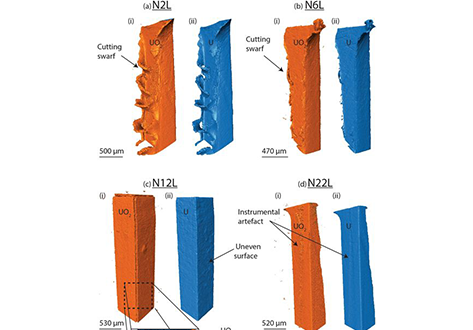In-situ, time resolved monitoring of uranium in BFS:OPC grout. Part 2: Corrosion in water

To reflect potential conditions in a geological disposal facility, uranium was encapsulated in grout and submersed in de-ionised water for time periods between 2–47 weeks. Synchrotron X-ray Powder Diffraction and X-ray Tomography were used to identify the dominant corrosion products and measure their dimensions. Uranium dioxide was observed as the dominant corrosion product and time dependent thickness measurements were used to calculate oxidation rates. The effectiveness of physical and chemical grout properties to uranium corrosion and mobilisation is discussed and Inductively Coupled Plasma Mass Spectrometry was used to measure 238U(aq) content in the residual water of several samples.